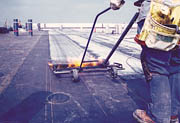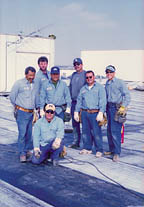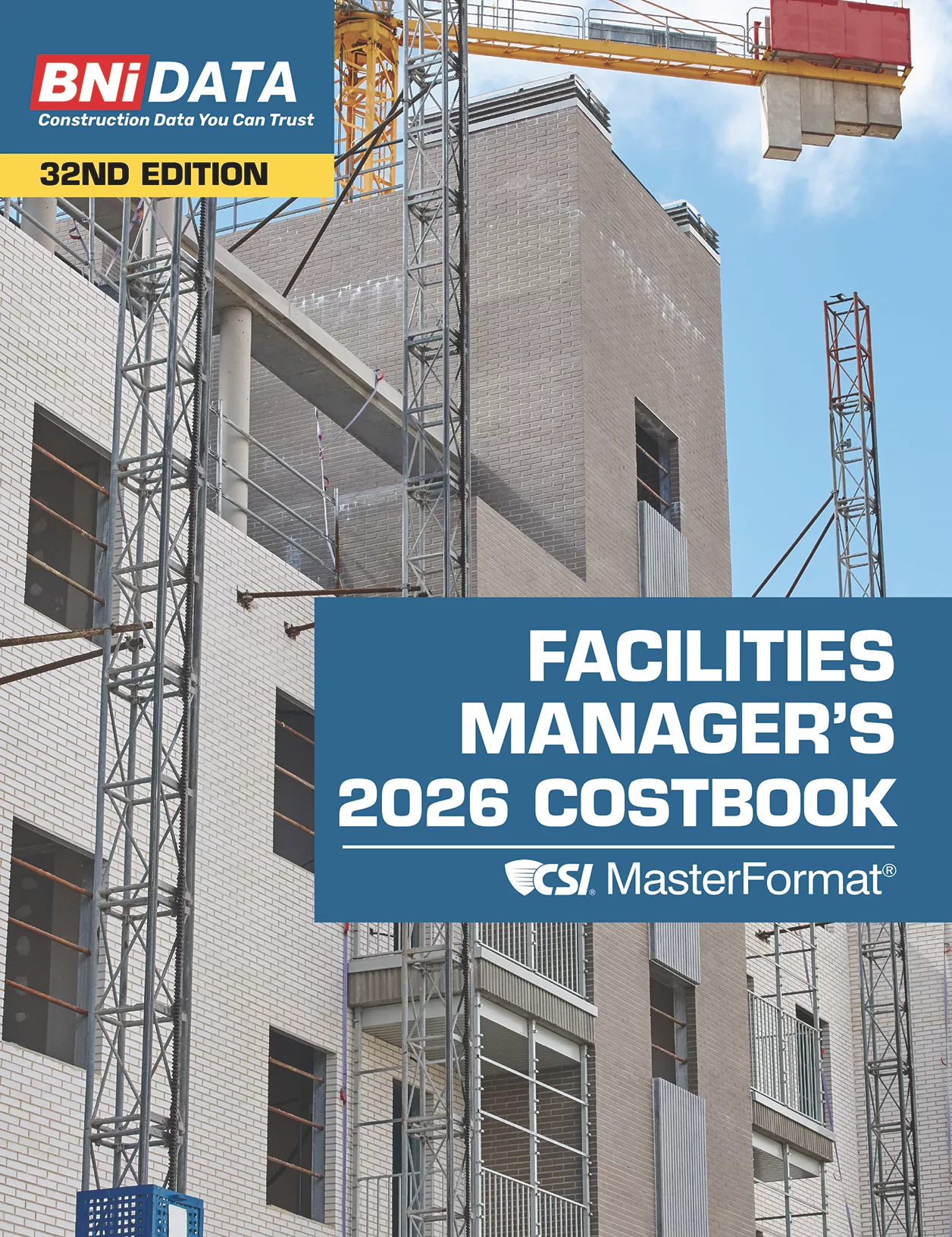Local Roofer Meets Corporate America

Gardena, Calif., is not Hollywood and Bill Bligh, project manager for Bligh Pacific, is not a screenwriter, as far as we know. But Bligh characterizes the story of his firm’s high-profile work at Nissan’s U.S. headquarters as a tale of “roofers in corporate America.” He points to one pre-job negotiating meeting in which Bligh Pacific met with several reps, including an environmental manager, a safety manager, a contract manager, an accounts manager, and a project manager. “It was like the Army Corps of Engineers meets the local roofing contractor,” he explains.
Leading Role
But don’t be misled. Bligh Pacific does not operate out of a pickup truck, far from it. Current Owner Jay Bligh began the firm with his father in 1976. The union shop employs about 100 people and specializes in all types of commercial roofing. According to Jay, “We have developed a competitive company. We do millions of dollars in schools and public works. And we’ve got our hands full – training workers, keeping up with OSHA and selling jobs.”In addition to achieving financial success, Bligh Pacific actively promotes the industry. “We are in this for the long term. This is our business,” says Jay. “We are proud of this industry. We work through the union, the local association, the WSRCA and NRCA to support the industry at every level we can. We see it as a win-win situation. We are proud of what we have established and take it seriously.” The company is especially active at the local level. “We focus on our market – it’s the most important,” Jay explains. “We work to keep our employees at a living wage.”
Jay sees the problem in Southern California as the fact that a lot of employees aren’t looked at with the amount of respect that they deserve. “The market has changed a bit,” he observes. “We’ve worked locally with union roofing contractor associations trying to improve it. Roofing is an extraordinarily difficult business — it’s hard to work 40 hours plus and raise a family. We are all challenged.”
Auditions
But Bligh Pacific is up to meeting its challenges, and had the skill and experience necessary for the Nissan project. The company had done some work for Nissan in the past, so it was invited to bid on the current job, which encompasses a tear-off and reroofing of two buildings in the Nissan North America complex. Building 1 has two roofs separated by a patio – a three story upper roof and a single story lower roof for a total of 850 squares. Building 2 is a nine-story high rise measuring 150 squares. According to Bill, both buildings had a single-ply membrane nearing 20 years in age that had performed as expected, with the exception of problems stemming from high traffic and window-washing activity.Settling on a specification and actually getting the contract involved numerous twists and turns in the plot. The complicated negotiation process began in early 2001. The original spec was for a built-up roof and an Energy Star® coating, with an alternate for single-ply. Bligh Pacific attended a meeting and walked the facilities, as did two other bidders, in January. After this came several follow-up meetings, phone calls and faxes. The parties involved, in addition to the client and Bligh Pacific, included The Washington Group International (WGI), which was Nissan’s contractor, and W.P. Hickman, hired to specify and oversee bidding and installations.
“All parties played a large role in the competitive bidding stages to set the spec, price and schedule,” says Bill. “By May, there was a totally new spec with modified APP, and we went back in to bid,” he continues. “There were three weeks and three intense meetings. The client wanted to know about every aspect of the job – and have us break down the costs.” And don’t forget: Bligh Pacific’s competitors were having their own meetings. “There were meetings with WGI and continuing negotiations until August,” Bill explains.
One key element in Bligh Pacific’s negotiating success was that GAF Materials Corp., Bligh’s manufacturer of choice, made itself available for questions at the meetings. “We put together specifications for two different types of roof decks,” says Mike Hurley, GAF’s field sales manager for Southern California. GAF’s specs accommodated what the owner and consultants were hoping for, especially the 15-year warranty. According to Hurley, “We reassured the building owner that what the roofing contractor was doing met their requirements.”

The Script
The resulting roof system was as follows: a lightweight concrete deck with a GAFGLAS #75 base sheet mechanically attached with DrillTech Lightweight Concrete fasteners; GAFTEMP Isotherm 2-inch composite roofing insulation set in hot asphalt, followed by another layer of base sheet set in hot asphalt; two layers of Ruberoid Torch Smooth, a torch-applied modified bitumen membrane that was heat-welded and surfaced with 1gallon per square of MB+; and finally, 1 gallon per square of Topcoat spray-applied membrane.
Using the Topcoat, an Energy Star product, allowed the client to qualify for a rebate from the state of California’s Cool Roof program (see side bar). “The long-term guarantee through GAF and its single-source abilities — roofing, insulation and Energy Star coating — ultimately helped Nissan and its consultants decide,” says Jay. Bill adds, “As part of our value-added services, we give the customer a single-source supplier … GAF assisted in the sale.” This level of manufacturer involvement is not common, but the Nissan project is a big job and a point of interest. “This job is 100,000 square feet of roofing on a corporate headquarters. So we went the extra mile,” says Bill. He also gives due credit to the client, “A lot of owners don’t want to go through the trouble to learn about roofing and know what was going on.” And Jay observes that Nissan also went that extra mile to make sure they got exactly what they wanted, and got exactly what they were paying for.
Out-takes
While the pre-job negotiations were the biggest challenge on this job, the key to its success, according to Bill, was the project management. Communicating with the client was critical. “When we load the roof, we set up a crane where people need to walk. We need to make sure they don’t,” he says. On the days the roof is loaded, “The Washington Group has security shut down the parking lot and access road.” A security rep sat in all of Bligh’s meetings in order to coordinate security concerns with the flow of work.These weekly meetings included Bligh Pacific, The Washington Group, and Nissan, and sometimes Performance Tear-Off of Los Angeles, the subcontractor hired for removal and abatement. “Without project management, the average contractor could only come in for a few meetings before they started losing money,” Bill observes.
The roofing work itself was very straightforward, with crews of eight to 12 men. “The best product was specified,” says Bill. “Torching the material down is very occupant friendly. There’s no odor, no mess and no tanker truck parked on the side of the building. Once the material was loaded on the roof, no one knew we were up there.” Although nailing the base sheet down was noisy, Bligh Pacific gave advanced warning when this was happening. And as far as safety issues on the job, Bill explains, “Our company’s safety program is ongoing, with pre-job specific meetings. For this job, staging was critical, especially crane loads in and around pedestrian areas.”
Finale
When asked what the Nissan project means to his company, Jay responds, “Anytime you are working at a high profile site, with the thoroughness that such an owner demands, it’s always gratifying to do the work.” In these uncertain times, landing big jobs is particularly satisfying. “All of us are looking to strengthen our relationships – personal and business,” says Jay. “We are gratified in this troubling time that our clients are going forward with their projects and choosing our company. Everyone is looking one day ahead at a time. A project like this one is kind of a model for that type of an owner – taking the time and energy to find those with expertise.”And it doesn’t hurt when your work speaks for itself. Paul Olachia, project manager for The Washington Group, tells us that after a recent heavy rain, he and a representative from Nissan walked the roof and were very pleased to see it performing.
He says that the job was “expeditiously done,” and agrees that Bligh Pacific was able to go the extra mile. “This was a high profile job,” Olachia explains. And, in the midst of the job, an important client conference meeting came up unexpectedly. Bligh Pacific was able to stop work for the meeting, yet still get done on time. “They were flexible,” says Olachia. “They even got ahead of schedule, but didn’t sacrifice quality.”
Cool Roof Side Bar
When Nissan North America contracted with Bligh Pacific to install GAF’s Topcoat spray-applied membranes, Nissan was able to take advantage of the California Energy Commission's Cool Savings Program.* This program, as well as the new Chicago energy code (see Editor’s Note, January 2002 issue of Roofing Contractor), provides a glimpse into the future that roofing will play in achieving energy efficiency.In a response to last year's energy crisis, the state of California made changes to the California Code of Regulations, specifically, Title 24, Part 6, Energy Efficiency Standards for Residential and Nonresidential Buildings. The state also implemented the California Cool Savings Program to provide incentives for reducing peak electricity demand for air conditioning loads linked to solar energy absorbed by roof surfaces and rooftop ducts.
Qualifying Cool Savings Program projects are processed on a first-come, first-serve basis until funds are exhausted or until November 30, 2002, whichever comes first. Projects include all non-residential occupancies (defined in Title 24, Part 6), as well as multi-unit residential buildings. All buildings must have electrically powered, compressor-based air conditioning systems, or refrigeration system(s) in the case of refrigerated (cold storage) buildings, operating at least from June through September. Exception: Schools are not required to operate during summer break in order to qualify for the incentive.
Qualifying cool roof products are listed in the version of the “Energy Star® Roof Products Program Qualifying Product List” current between the time of grant application and final application submittal. In addition to being included on the Energy Star list, qualifying products must meet the following criteria: an initial reflectivity of greater than or equal to 65 percent as published in Energy Star Qualifying Products List and an emittance of greater than or equal to 80 percent. The exception is high-profile tile for sloped roofs, which must have an initial reflectivity of greater than or equal to 40 percent and an emittance of greater than or equal to 80 percent.
Qualifying products must be installed according to manufacturer specifications. The manufacturer must provide a written five-year materials warranty, while the contractor provides a written two-year minimum labor warranty. The warranties cover defects in materials, workmanship and installation, including but not limited to cracking, flaking, peeling, bubbling, blistering, and leaking, when properly applied to all structures subject to normal usage. All liquid-applied coatings must meet the ASTM standards applicable to each type of coating applied (ie. ASTM D6083-97 for acrylic coatings). Cool roofs must also meet all applicable codes and standards beyond the Cool Savings Program eligibility criteria.
Incentive payments range from 15 to 20 cents per square foot. There are also incentives for roof insulation added in conjunction with a cool roof. Roofs with an initial (pre-retrofit) insulation R-value of less than or equal to R-5 are eligible for an additional five cents per square foot when insulation of R-2 or greater is added in conjunction with a qualifying cool roof.
The Cool Roof Rating Council
Though the California Cool Savings Program ends in November 2002, the updates to Title 24 are long-term. Title 24 allows designers and builders to factor in a cool roof when they submit energy efficiency plans for approval. "This is a first. It allows for design flexibility," explains Chris Harris, president of National Coatings Corp., Camarillo, Calif., and a member of the Cool Roof Rating Council (CRRC). "It doesn't say, 'Thou shalt have a cool roof,' but it might give you the option, for example, to have a different number or type of windows in an office building that is built with a Cool Roof System."
After Jan. 1, 2003, Title 24 says that a cool roofing product's acceptance will be determined based on the CRRC's rating system for radiative properties of roof surfaces. The CRRC is composed of government agencies, research organizations, energy service providers, public interest groups and the roofing industry. Its goal is to provide a credible rating system for radiative properties of roof surfaces (i.e., solar reflectivity and thermal emittance).
"The CRRC will set up a system by which data can be generated by accredited laboratories and certified. It's up to code officials (whether in California or elsewhere) to determine the standard," says Harris. "The CRRC is focusing on the two roof properties, reflectivity and emissivity, that both the California Cool Savings Program and California’s Title 24 have requirements for. The Energy Star program, however, only has a reflectivity criteria at this time."
At press time, the CRRC completed a final draft of its manual and sent it out to members for final comments. The CRRC Certification Program will be introduced on February 13, 2002, at the National Roofing Contractors Association Convention in San Antonio, Texas. "We hope to use a workshop approach, explaining how the Program works, the process for certifying products, associated fees, the schedule for Program start-up, etc. as manufacturers will probably be testing products by mid-summer," says Harris. Then it will up to the different code bodies, utility companies, etc. to set requirements and incentives, presumably based on CRRC ratings.
The important point, says Harris, is that the California’s Cool Savings Program, Title 24 code changes and the CRRC Program, represent a growing trend, one that says cool roofs are desirable, if not preferable, building systems. "These initiatives, along with others around the U.S., show that governments believe cool roof systems work and they are often willing to put taxpayer money behind them." Harris also believes that warranty requirements for the Cool Savings Program and the specific coating performance (based on ASTM standards) and mil thickness requirements in Title 24 are further evidence that cool roofs are being positioned as long-term performance systems. The message to contractors, says Harris, is to be aware that these trends and programs surrounding roof energy efficiency are continuing and expanding.
* Information on the California Cool Savings Program was taken from the California Energy Commission's web site. For complete guidelines, explanations and additional information, visit www.consumerenergycenter.org. For updates on Cool Roof trends, including the Cool Roof Rating Council, visit www.nationalcoatings.com and www.CoolRoofs.com.
Links
Looking for a reprint of this article?
From high-res PDFs to custom plaques, order your copy today!






